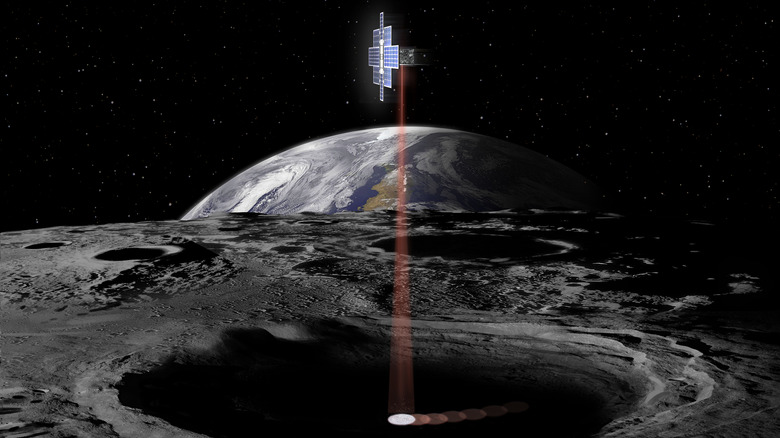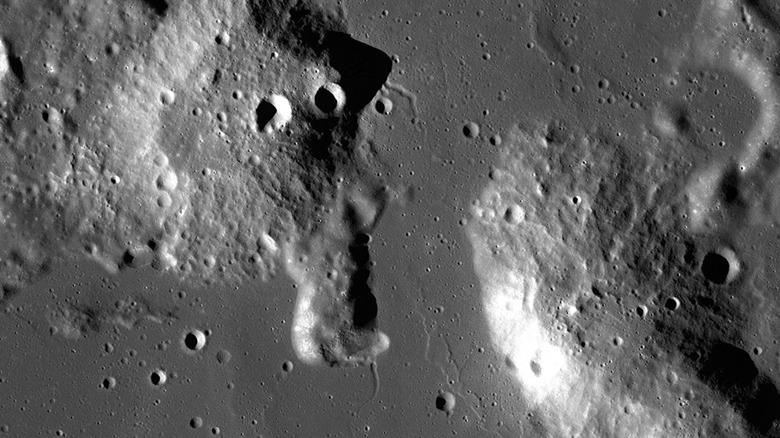Here Are The Science Experiments That NASA Wants To Send To The Moon
As NASA prepares for its series of Artemis lunar missions, the plan to send astronauts back to the moon for the first time in over 50 years is getting most of the headlines. But the mission series will include a lot of scientific research, as well, because there's a lot we still have to learn about the moon and the space around it.
In Artemis I, the first uncrewed Artemis mission, the team will test out NASA's Space Launch System rocket and its spacecraft Orion; there will be a raft of science experiments on board as well. These include several small satellites, called CubeSats, that will perform various functions. There's the Near-Earth Asteroid Scout that will look at asteroids that fly close to Earth to see if we could visit one in the future. There's also the CubeSat for Solar Particles, which will study the radiation given off by the sun. Finally, there's a Japanese CubeSat called OMOTENASHI (Outstanding MOon exploration TEchnologies demonstrated by NAno Semi-Hard Impactor) that will land on the moon's surface to measure the radiation environment there.
There are further experiments planned to study the moon itself, as well. One big topic in moon research right now is locating useful resources like water ice, which will be important for future crewed missions there. There are several satellites dedicated to this hunt, like the Lunar IceCube earmarked to orbit the moon in search of locations where there could be water ice, the Lunar Polar Hydrogen Mapper that will also help look for ice, and the Lunar Flashlight that'll be used to search for ice using near-infrared lasers.
Commercial exploration of the moon
In addition to all of the science that will be sent on the NASA Artemis flights, the space agency is also working with private companies to explore the moon further. The Commercial Lunar Payload Services (CLPS) program will run a series of missions to the moon to test out lunar landers and payloads provided by commercial companies. In June 2022, NASA announced two science experiments that will be delivered as part of CLIPS: one to study the mysterious Gruithuisen Domes called Lunar-VISE and one for biological research called Lunar Explorer Instrument for space biology Applications (LEIA).
"The two selected studies will address important scientific questions related to the moon," said the deputy associate administrator for exploration in NASA's Science Mission Directorate, Joel Kearns. "The first will study geologic processes of early planetary bodies that are preserved on the moon, by investigating a rare form of lunar volcanism. The second will study the effects of the moon's low gravity and radiation environment on yeast, a model organism used to understand DNA damage response and repair."
LEIA will carry a type of yeast called Saccharomyces cerevisiae to the moon's surface to see how it adapts to the low gravity and high radiation environment there. The researchers hope that data on how the yeast fares will help reveal how humans could be affected by longer stays on the moon, as well, especially in terms of their genetics. The CLIPS missions are scheduled to begin in the "early 2020s," according to NASA.

